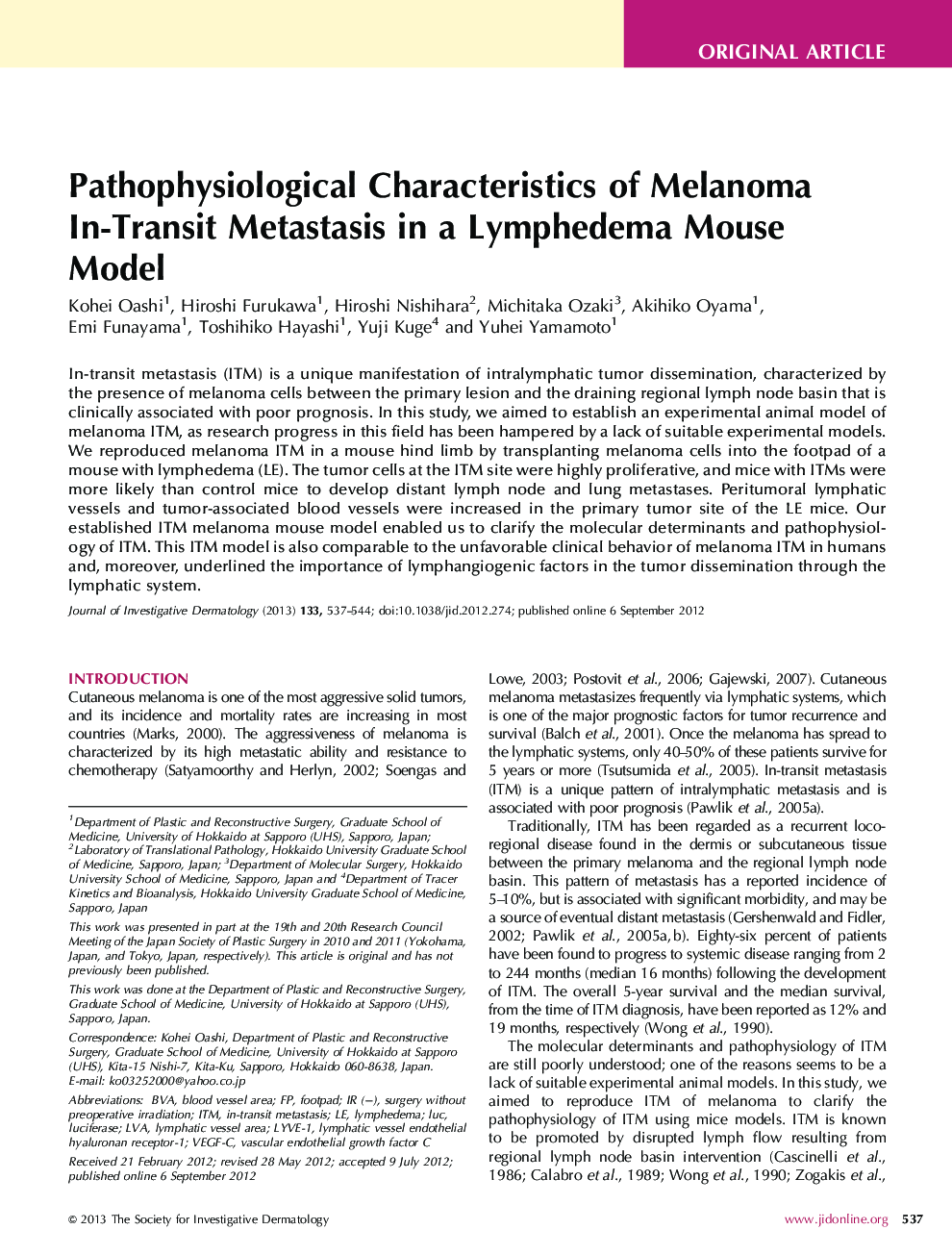| Article ID | Journal | Published Year | Pages | File Type |
|---|---|---|---|---|
| 6078018 | Journal of Investigative Dermatology | 2013 | 9 Pages |
Abstract
In-transit metastasis (ITM) is a unique manifestation of intralymphatic tumor dissemination, characterized by the presence of melanoma cells between the primary lesion and the draining regional lymph node basin that is clinically associated with poor prognosis. In this study, we aimed to establish an experimental animal model of melanoma ITM, as research progress in this field has been hampered by a lack of suitable experimental models. We reproduced melanoma ITM in a mouse hind limb by transplanting melanoma cells into the footpad of a mouse with lymphedema (LE). The tumor cells at the ITM site were highly proliferative, and mice with ITMs were more likely than control mice to develop distant lymph node and lung metastases. Peritumoral lymphatic vessels and tumor-associated blood vessels were increased in the primary tumor site of the LE mice. Our established ITM melanoma mouse model enabled us to clarify the molecular determinants and pathophysiology of ITM. This ITM model is also comparable to the unfavorable clinical behavior of melanoma ITM in humans and, moreover, underlined the importance of lymphangiogenic factors in the tumor dissemination through the lymphatic system.
Related Topics
Health Sciences
Medicine and Dentistry
Dermatology
Authors
Kohei Oashi, Hiroshi Furukawa, Hiroshi Nishihara, Michitaka Ozaki, Akihiko Oyama, Emi Funayama, Toshihiko Hayashi, Yuji Kuge, Yuhei Yamamoto,
